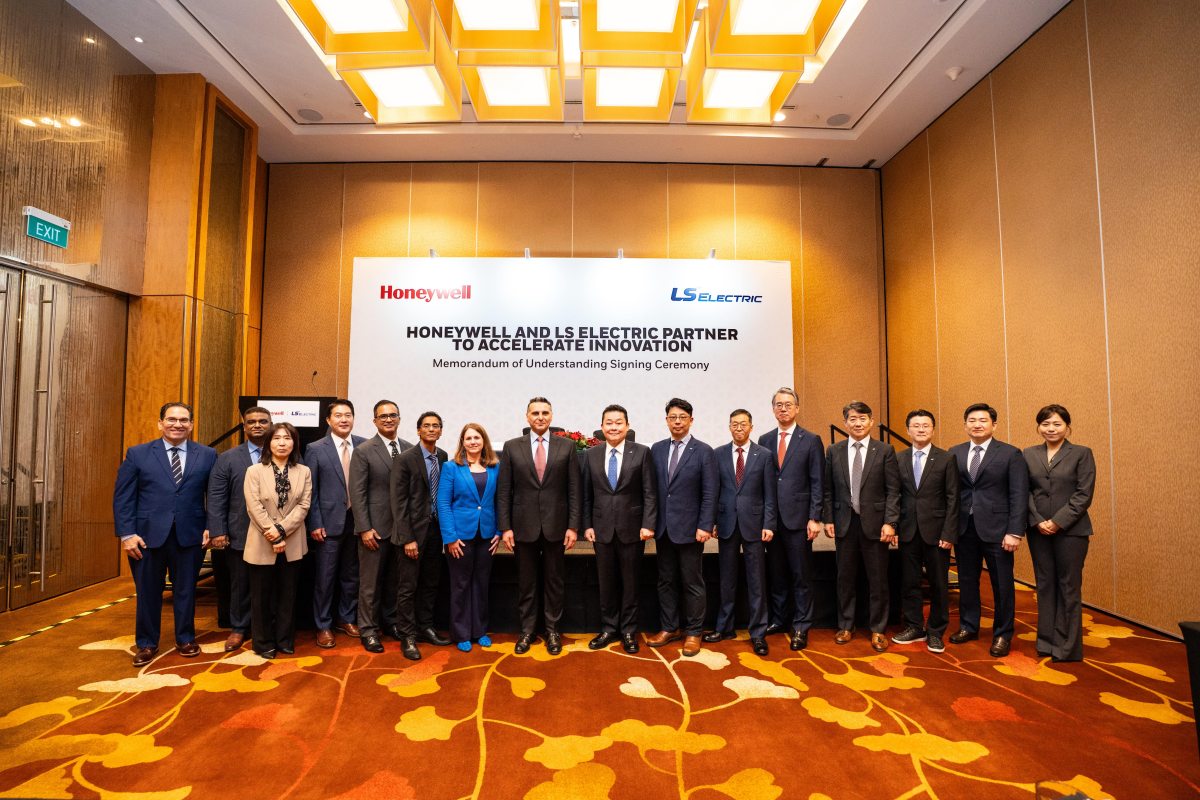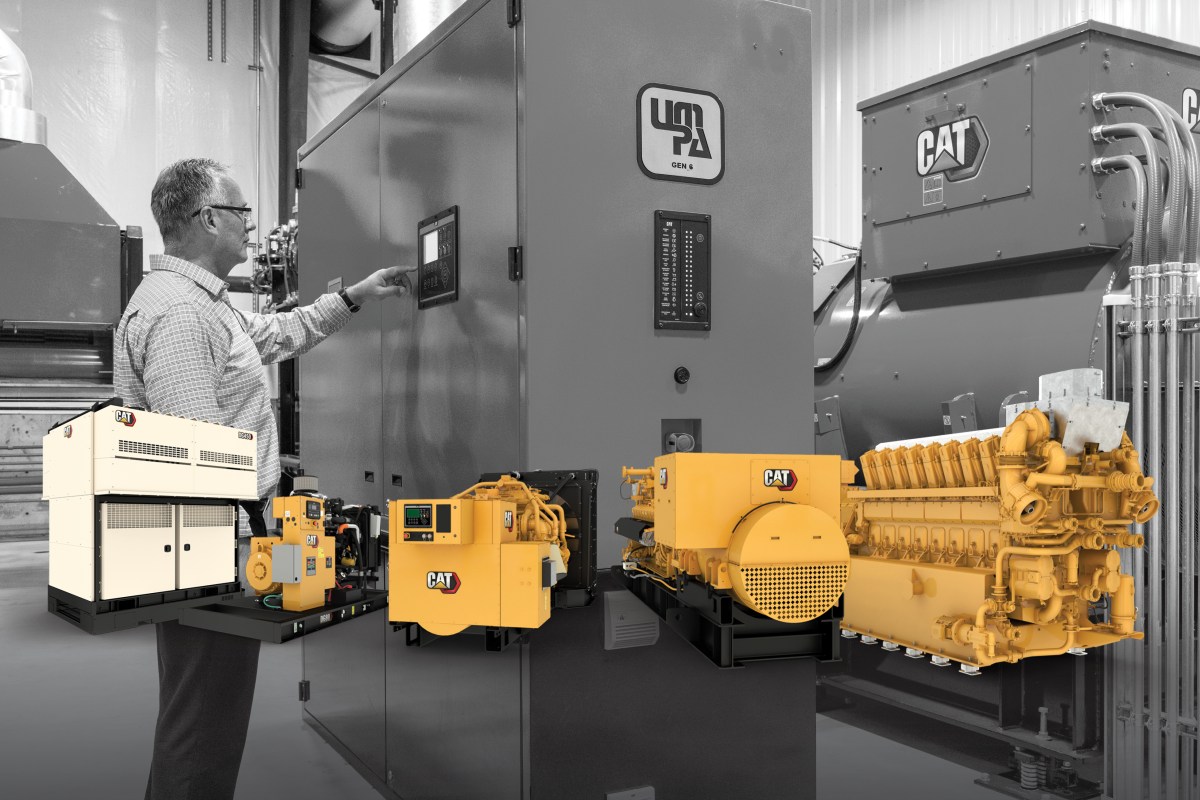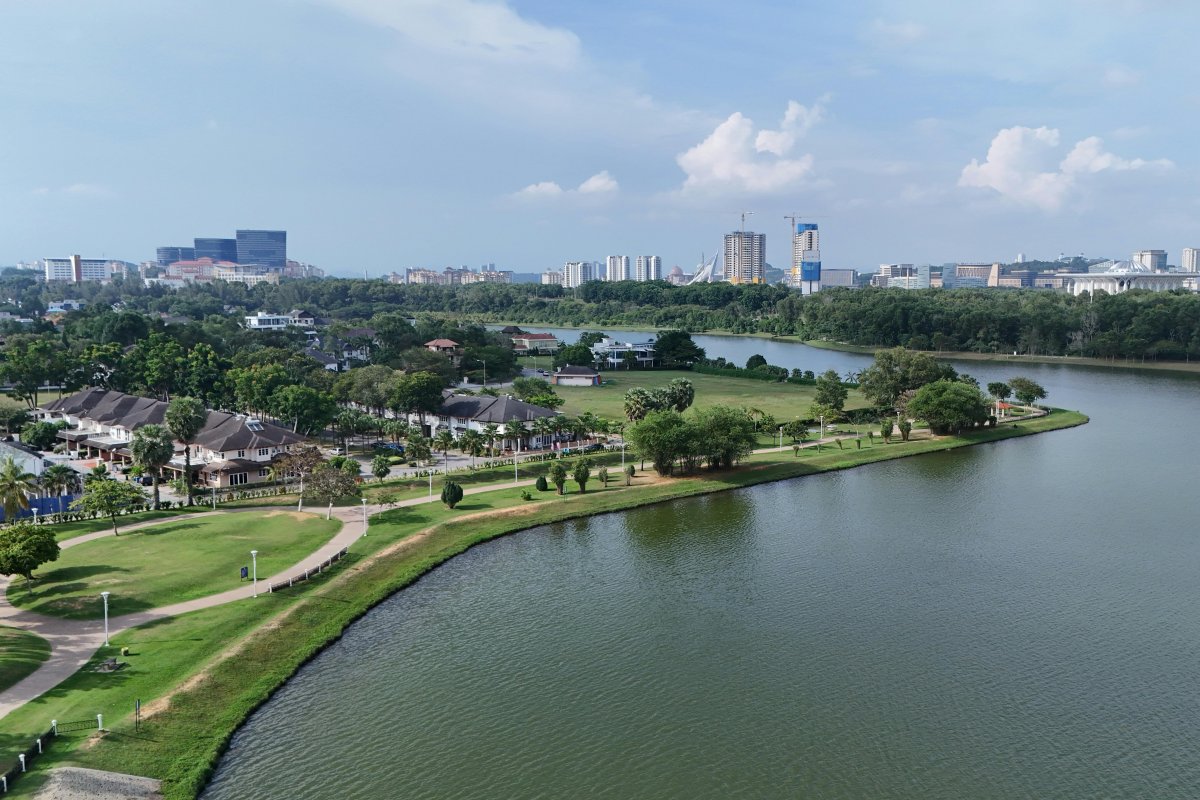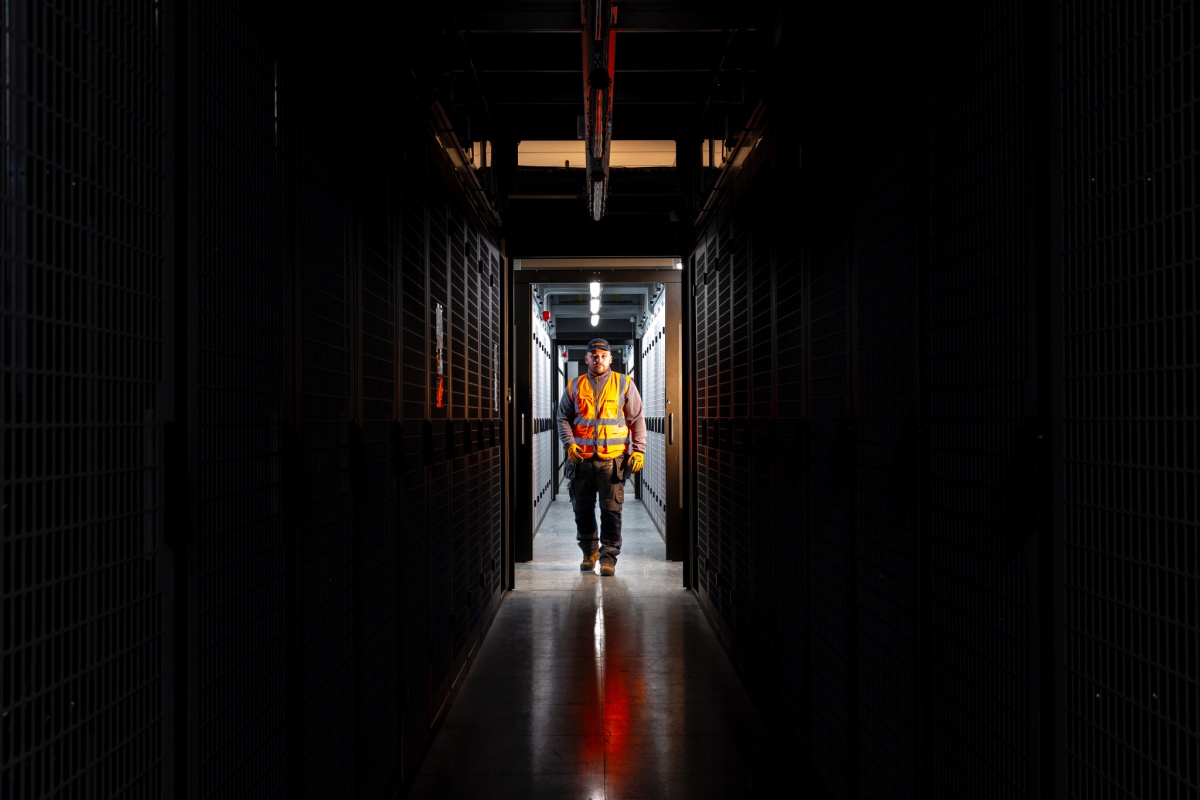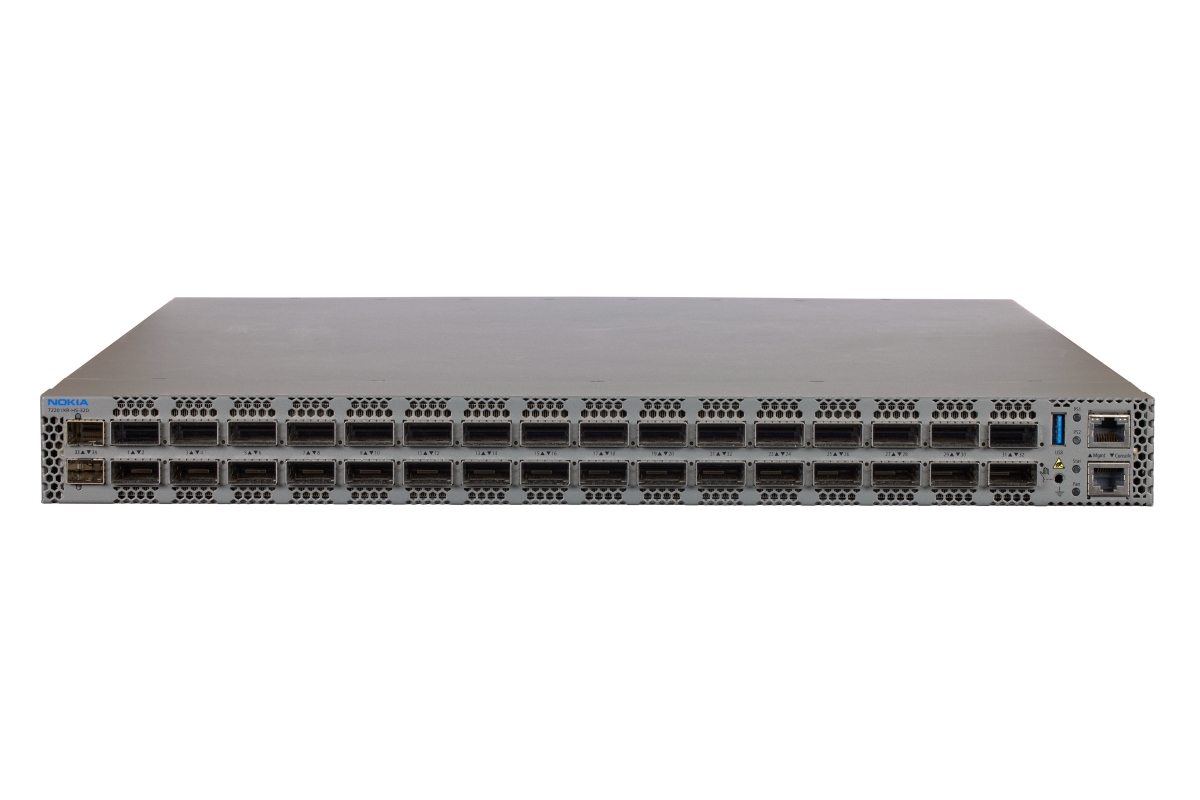10 October 2025
LINX achieves 25 x 400GE port count milestone
LINX achieves 25 x 400GE port count milestone
10 October 2025
365 Data Centers appoints new CEO and President
365 Data Centers appoints new CEO and President
10 October 2025
Object First launches 'ransomware-proof' storage
Object First launches 'ransomware-proof' storage
9 October 2025
Duos Edge AI expands edge DC network in Texas
Duos Edge AI expands edge DC network in Texas
9 October 2025
Saudi Arabia’s first integrated data science and AI diploma
Saudi Arabia’s first integrated data science and AI diploma
Latest News
Data Centre Infrastructure News & Trends
Innovations in Data Center Power and Cooling Solutions
News
Honeywell, LS Electric deal to boost data centre power
Honeywell, a US multinational specialising in building automation, has announced a global partnership with LS Electric, a South Korean manufacturer of electrical equipment and automation systems, to develop and market integrated hardware and software systems for power management and distribution in data centres and commercial buildings.
The collaboration aims to simplify the integration of electrical and automation systems, improving operational efficiency, resilience, and energy management for operators of data-intensive and energy-critical facilities.
Integrated approach to power and automation
The partnership combines LS Electric’s experience in power infrastructure with Honeywell’s expertise in building automation and control systems.
Together, the companies plan to offer systems that unify power distribution and building management, ensuring load and capacity are balanced to maintain resilience and uptime.
The first joint products will include integrated switchgear and power management systems that help data centre operators control and distribute power more effectively.
Future development will focus on new electrical monitoring systems using the Honeywell Forge platform, enhanced with AI and analytics, and LS Electric’s software capabilities.
These systems will be designed to regulate energy distribution, improve efficiency, and provide predictive maintenance to reduce downtime and power quality issues.
Energy storage and grid resilience
Honeywell and LS Electric also plan to develop a grid- and building-aware battery energy storage system (BESS) for commercial and industrial buildings.
The modular BESS will integrate LS Electric’s energy storage technology with Honeywell’s dynamic energy control software, allowing users to forecast and optimise energy sourcing and costs based on grid data, weather conditions, and other variables.
The companies said the technology will help manage growing energy demand from sectors such as data centres, which currently account for between 1-2% of global electricity consumption.
Billal Hammoud, President and CEO of Honeywell Building Automation, comments, “Our collaboration with LS Electric supports our continued focus on delivering smarter, scalable solutions for the world’s most critical industries.
"As the global demand for data and energy accelerates, this partnership combines our complementary strengths to deliver intelligent infrastructure that’s both resilient and efficient.”
JongWoo Kim, President of LS Electric Power Electric, adds, “Building on our expertise in power infrastructure and energy storage systems, we are expanding globally into the data centre and industrial building markets.
"Through our collaboration with Honeywell, we will provide solutions that help large-scale operators achieve both energy efficiency and reliability.”
For more from Honeywell, click here.
Joe Peck - 9 October 2025
Data Centre Infrastructure News & Trends
Innovations in Data Center Power and Cooling Solutions
Sponsored
The shift from standby to strategic energy management
In this article, Laura Maciosek, Director Key Accounts at Cat Electric Power Division, talks about why shifting backup assets into primary power is becoming essential as grid constraints intensify:
It’s safe to say the energy landscape is changing, with many prominent and significant changes having taken place in the last 24 months. The data-driven society we live in, from streaming devices and smart appliances to AI processing, continues to move demand for data centres in just one direction: up.
As data centres experience this growth, utility power is no longer a given. Today, there’s no guarantee the local electrical grid can meet these increased power needs. In fact, many utilities I’ve talked with say it’ll be three to five years (or longer) before they can bring the required amount of power online.
That puts data centre customers in a tricky position. How can they continue to expand and grow if there isn’t enough power and moving sites isn’t an option?
The answer includes rethinking power options, and that means considering the transition from using power assets for largely backup purposes to employing them as a primary power source. That’s a big change from the status quo.
If you’re in a similar position, you can read our advice on how to navigate the transition on our blog.
Whether you’re ready to make the switch from standby to prime power at your data centre today – or simply weighing options for your next development or expansion – we’re here to help. We’ll work with you to find the right combination of assets and asset management software that fulfils your power requirements reliably and cost-effectively. Connect with one of our experts to get the process started.
For more from Caterpillar, click here.
Joe Peck - 8 October 2025
Data Centre Build News & Insights
Data Centre Projects: Infrastructure Builds, Innovations & Updates
News
Renewables and Energy: Infrastructure Builds Driving Sustainable Power
CleanArc adds 300 MW to planned Virginia campus
CleanArc Data Centers, a US developer of renewable-energy-powered hyperscale data centre campuses, has acquired an additional 35.4 hectares of land to expand its flagship hyperscale data centre campus in Virginia.
The expansion increases the site’s planned capacity from 600 MW to nearly 1 GW, supporting growing demand for scalable and energy-efficient digital infrastructure.
The new development will deliver an extra 300 MW of critical power capacity, enhancing redundancy and long-term resilience for hyperscale clients.
Expansion timeline and capacity growth
The first 300 MW phase of the Virginia campus is scheduled to come online in the first quarter of 2027, followed by a second phase in 2030.
The latest land acquisition enables a third 300 MW phase, currently planned for between 2033 and 2035.
James Trout, founder and CEO of CleanArc Data Centers, comments, “Securing this additional land and substantially increasing our planned capacity positions CleanArc to meet the needs of the most demanding hyperscalers.
"We’re ensuring our customers have the infrastructure they need to grow, innovate, and operate without limits today and well into the future.
"Working closely with Caroline County, this expansion will support our customers’ growth while reinforcing our dedication to sustainability and making a positive, lasting impact on the local community.”
Groundbreaking for the VA1 project is scheduled for the fourth quarter of 2025.
For more from CleanArc Data Centers, click here.
Joe Peck - 8 October 2025
Data Centre Infrastructure News & Trends
Enterprise Network Infrastructure: Design, Performance & Security
News
Products
CommScope expands SYSTIMAX Constellation platform
CommScope, a US manufacturer of network infrastructure products, has announced the global availability of its evolved SYSTIMAX Constellation platform, an edge-based system for power and data connectivity designed for large-scale enterprise networks.
Now compliant with international power and data transmission standards, the Constellation platform combines fault-managed power with hybrid power and data fibre cabling in a simplified star topology.
The design enables hundreds or thousands of connected devices to be powered and linked efficiently across buildings or campuses.
Simplified architecture for modern infrastructure
The platform’s modular, technology-agnostic design supports both AC and DC power applications and multiple IT and operational technology (OT) standards.
The company says unlike traditional structured cabling, Constellation removes the need for a telecoms room or wiring closet on every floor, allowing centralised uninterruptible power supply (UPS) management.
Constellation Points (CPs) can be installed in ceilings, walls, or equipment racks, reducing space requirements and component use. The system delivers higher power and faster data speeds over longer distances, supporting 10G and above bandwidth and up to 1kW of fault-managed power.
According to CommScope, the platform can reduce installation labour by more than 50% compared with conventional cabling, while also lowering material use and the network’s overall carbon footprint through reductions in copper and plastic.
Luc Adriaenssens, Vice President of Building and Campus, CommScope Connectivity Solutions, comments, “The Constellation platform enables our customers to support denser urban environments and the growing number of connected devices in their buildings.
"By offering a modular, technology-agnostic solution, we’re providing greater flexibility for network design - allowing scalability, sustainability, and cost efficiency.”
Technical and sustainability features
Part of CommScope’s SYSTIMAX cabling and connectivity range, the Constellation system includes Propel fibre panels, power transmitters, and transition panels connected to CPs via hybrid fibre trunks.
End devices are linked through pre-terminated Cat 6A patch cords and cable assemblies.
Key performance and sustainability metrics include:
• Up to 1,800W of power delivered at distances of 250m• Up to 1,000W at 500m• Up to 700W at 1,000m• Support for 10G and higher data rates• Up to 50 connected devices per CP• 57% reduction in skilled installation labour hours• 59% less copper and 65% less plastic compared with traditional LAN systems• Up to 40% lower embodied network carbon footprint
The Constellation platform is now available worldwide.
For more from CommScope, click here.
Joe Peck - 8 October 2025
Data Centre Build News & Insights
Data Centre Infrastructure News & Trends
Innovations in Data Center Power and Cooling Solutions
Sustainable Infrastructure: Building Resilient, Low-Carbon Projects
A-Gas completes large-scale DC refrigerant recovery project
A-Gas, a company specialising in Lifecycle Refrigerant Management (LRM), has completed a major refrigerant recovery project for a global technology provider, marking a significant environmental milestone for the data centre sector.
More than 73,000 lbs (33,000 kg) of R410A were safely recovered across five buildings containing 222 cooling units scheduled for decommissioning. The work, carried out under challenging summer conditions, prevented the release of greenhouse gases equivalent to 70,226 tonnes of carbon dioxide (CO₂e).
The project was managed by A-Gas Rapid Recovery, the company’s on-site refrigerant recovery division, which specialises in high-speed, compliant recovery operations for commercial and industrial facilities.
Environmental and operational impact
A-Gas said the recovery operation demonstrated its commitment to safe and environmentally responsible refrigerant lifecycle management.
The project not only reduced environmental impact, but also delivered financial benefits to the client through the A-Gas buyback programme.
Rapid Recovery’s process is designed to complete complex projects quickly, with recovery speeds up to 10 times faster than conventional methods, helping reduce downtime during critical infrastructure transitions.
The operation included full Environmental Protection Agency (EPA) documentation, refrigerant analysis, and regulatory compliance checks throughout.
A-Gas said its approach combines global expertise with safety-first practices to help technology and data centre clients meet both operational and sustainability goals.
For more from A-Gas, click here.
Joe Peck - 7 October 2025
Data Centre Infrastructure News & Trends
Enterprise Network Infrastructure: Design, Performance & Security
Exclusive
Building AI-ready networks: Smart cabling for the edge era
In this exclusive article for DCNN, Rachid Ait Ben Ali, Product & Solutions Manager, Smart Building & Data Center at Aginode, explores how next-generation fibre and automated management systems are redefining infrastructure for AI and edge computing:
Cabling for the future
As artificial intelligence and edge computing rapidly reshape data centre architectures, network infrastructure has to evolve to keep up. Critical applications such as autonomous systems, real-time analytics, and GPU-to-GPU communication for AI model training are highly sensitive to latency, signal degradation, and disruptions caused by excessive hops or amplification points. To meet fast-moving, rigorous requirements, cutting-edge cabling solutions - including ultra-dense fibre panels and the latest generation of Automated Infrastructure Management (AIM) systems - are essential.
A closer look at the requirements
AI-driven infrastructure is unforgiving of downtime and demands built-in redundancy. Workloads are often unpredictable and heavily overloaded, which means they need optical cabling that can absorb traffic spikes without performance degradation. Architectures supporting AI are non-linear and bandwidth-intensive, requiring designs with optimised physical pathways. Fibre networks in these settings must be capable of supporting transmission rates of 400G, 800G, and beyond.
At the same time, edge computing introduces a new level of complexity. Its highly distributed nature requires fibre connectivity that is not only robust and high-performing, but also low maintenance and compact enough to function within physical and power-constrained environments. As AI workloads - from training to inference - generate immense volumes of east-west traffic across dense GPU clusters, managing connectivity and thermal performance becomes critical. These clusters produce extreme heat, making thermally optimised cabling and carefully considered airflow vital.
Addressing challenges from a technical perspective
Everything starts with the right cabling. Pre-terminated fibre links support rapid and reliable deployment at hyperscale and edge sites. High CPR-rated solutions help ensure compliance with stringent fire safety standards. As organisations plan for upgrades to 800G or even 1.6 Tbps networks, deploying a future-ready cabling plant is essential. Smart labelling systems simplify identification, reduce downtime, and help teams operate more efficiently. Ultra-polished UPC and APC connectors minimise reflection and insertion loss - crucial for extremely latency-sensitive AI applications.
High-density fibre-optic cabling, such as MPO/MTP for parallel optics, enables scalable bandwidth in compact footprints. OM5 multimode fibre is well-suited for dense AI clusters and edge deployments. Supporting multiple wavelengths over short distances and offering tighter loss budgets, OM5 delivers high bandwidth without dramatically increasing cable volume. Modern cable designs enhance performance through quality shielding, precise construction, shorter channel lengths, and cleaner signal paths that reduce hops and signal loss.
The network architecture itself also plays a key role. Ethernet backbones operating at 400G and 800G, combined with direct-connect models like leaf-spine or fully meshed fabrics, reduce latency and support AI’s massive east-west traffic patterns. Minimising patching and interconnection points cuts down on signal attenuation and interference, further improving efficiency. Innovations such as ultra-dense fibre panels and MPO connectors help scale operations without overloading valuable rack space and enable rapid deployment while avoiding costly rewiring.
AIM systems are becoming indispensable, offering real-time visibility into port status, topology, and usage, and integrating with Data Centre Infrastructure Management (DCIM) and orchestration tools. By leveraging AI-powered tracking and analytics, AIM systems enable real-time monitoring and automate management tasks. This reduces mean time to repair (MTTR), minimises human error, and supports large-scale, AI-driven operations. In environments where model training may take months, cabling with embedded diagnostics ensures uninterrupted operation and transparency. Different types of fibre can be tracked, diagnosed, and reconfigured with minimal manual intervention. That’s essential for mission-critical systems.
Further considerations
Smooth integration of high-performance fibre into AI and edge-ready environments demands careful attention to detail. As GPU-dense racks fill with fibre, insertion and connection loss must be minimised, which increases the importance of ultra-low-loss multimode solutions. Thermal and spatial constraints in AI deployments necessitate slim, compact cabling designs that do not compromise on performance. Adhering to industry standards such as ISO/IEC OM5 and MPO ensures compatibility across hardware ecosystems and simplifies deployment at geographically distributed edge sites.
Looking ahead, future-proofing and sustainability are equally important. Investing in OM5 fibre today helps avoid the cost and disruption of replacement as bandwidth demands continue to grow. Automated cabling systems reduce operational expenditures but also enable agile provisioning, even in edge locations where power is constrained. Low-loss fibre reduces the need for signal amplification, conserving energy, while structured, durable panels minimise long-term maintenance waste.
To accommodate the demanding requirements of AI and edge computing, data centre design must transition from legacy copper and basic point-to-point fibre models to high-density, automated multimode fibre ecosystems. Smart cabling, ultra-dense panels, and intelligent management solutions form the backbone of this transformation. These technologies empower both hyperscale and edge operations with high bandwidth, low latency, and operational agility.
Meeting the needs of AI-ready infrastructure doesn’t just require speed; it demands ultra-high bandwidth, minimal latency, granular insights, simplified manageability, and flexible (re)configuration. With the right infrastructure, it’s possible to build networks that are powerful enough for AI at scale and flexible enough enough for edge deployment.
Joe Peck - 7 October 2025
Data Centre Infrastructure News & Trends
Enterprise Network Infrastructure: Design, Performance & Security
News
DE-CIX Malaysia extends reach with NTT DATA partnership
Internet exchange (IX) operator DE-CIX Malaysia has announced the launch of its full suite of interconnection services at NTT DATA’s CBJ1 data centre in Cyberjaya, marking a further expansion of Malaysia’s digital infrastructure and the country’s role as a regional connectivity hub.
The partnership represents the first local collaboration between DE-CIX Malaysia and NTT Global Data Centres, following successful projects in other international markets.
It aims to enhance interconnection options for enterprises, internet service providers (ISPs), cloud providers, and content delivery networks (CDNs) across Southeast Asia.
Expanding interconnection capacity in Cyberjaya
The collaboration enables customers at NTT DATA’s Cyberjaya facility to access DE-CIX’s peering, cloud exchange, and virtual private network interconnection (VPNI) services.
These include premium peering through GlobePEER, direct cloud connectivity via DirectCLOUD, and Blackholing for DDoS mitigation.
Weng-Yew Wong, Member of the Board of Management at DE-CIX Malaysia, comments, “This partnership is a strategic move to bring DE-CIX’s interconnection services closer to Malaysia’s enterprises.
"By enabling our platform at NTT Global Data Centres’ Cyberjaya site, we are expanding the region’s digital ecosystem and offering greater reach, security, and reliability.”
The collaboration will also allow NTT Global Data Centres to attract additional network-focused tenants, including enterprise and hyperscale operators.
Yasuo Suzuki, Managing Director, APAC, NTT Global Data Centres, says, “This collaboration reflects our ongoing efforts to bring strategic partners such as DE-CIX into our facilities to enhance connectivity and performance for our clients.
"The presence of DE-CIX in our Cyberjaya campus offers improved access to cloud platforms and digital services with minimal latency.”
Strengthening Malaysia’s digital ecosystem
Cyberjaya has become one of Malaysia’s leading technology hubs, offering high-capacity power, fibre connectivity, and a growing community of network-based enterprises.
DE-CIX’s presence at NTT DATA’s CBJ1 data centre provides immediate access to its global interconnection platform via secure ethernet cross-connects and VLAN tagging, supporting low-latency connectivity to international networks.
The companies say the collaboration will contribute to the development of resilient, scalable digital infrastructure across Malaysia and strengthen interconnection routes between Asia, Europe, and the United States.
For more from DE-CIX, click here.
Joe Peck - 7 October 2025
Data Centre Architecture Insights & Best Practices
Data Centre Build News & Insights
Exclusive
Exploring Modern Data Centre Design
Data centre delivery: How consistency endures
In this exclusive article for DCNN, Steve Clifford, Director of Data Centres at EMCOR UK, describes how end-to-end data centre design, building, and maintenance is essential for achieving data centre uptime and optimisation:
Keeping services live
Resilience and reliability. These aren’t optional features of data centres; they are essential requirements that require precision and a keen eye for detail from all stakeholders. If a patchwork of subcontractors are delivering data centre services, that can muddy the waters by complicating supply chains. This heightens the risk of miscommunication, which can cause project delays and operational downtime.
Effective design and implementation are essential at a time when the data centre market is undergoing significant expansion, with the take-up of capacity expected to grow by 855MW - or a 22% year-on-year growth - in Europe alone.
In-house engineering and project management teams can prioritise open communication to help build, manage, and maintain data centres over time. This end-to-end approach allows for continuity from initial consultation through to long-term operational excellence so data centres can do what they do best: uphold business continuity and serve millions of people.
Designing and building spaces
Before a data centre can be built, logistical challenges need to be addressed. In many regions, grid availability is limited, land is constrained, and planning approvals can take years. Compliance is key too: no matter the space, builds should align to ISO frameworks, local authority regulations, and - in some cases - critical national infrastructure (CNI) standards.
Initially, teams need to uphold a customer’s business case, identify the optimal location, address cooling concerns, identify which risks to mitigate, and understand what space for expansion or improvement should be factored in now.
While pre-selection of contractors and consultants is vital at this stage, it makes strategic sense to select a complementary delivery team that can manage mobilisation and long-term performance too. Engineering providers should collaborate with customer stakeholders, consultants, and supply chain partners so that the solution delivered is fit for purpose throughout its operational lifespan.
As greenfield development can be lengthy, upgrading existing spaces is a popular alternative option. Called 'retrofitting', this route can reduce cost by 40% and reduce project timelines by 30%.
When building in pre-existing spaces, maintaining continuity in live environments is crucial. For example, our team recently developed a data hall within a contained 1,000m² existing facility. Engineers used profile modelling to identify an optimal cooling configuration based on hot aisle containment and installed a 380V DC power system to maximise energy efficiency.
This resulted in a 96.2% achievement across rectifiers and converters. The project delivered 136 cabinets, against a brief of 130, and, crucially, didn’t disrupt business-as-usual operations, using a phased integration for the early deployment of IT systems.
Maintaining continuity
In certain spaces like national defence and highly sensitive operations, maintaining continuity is fundamental. Critical infrastructure maintenance in these environments needs to prioritise security and reliability, as these facilities sit at the heart of national operations.
Ongoing operational management requires a 24/7 engineering presence, supported by proactive maintenance management, comprehensive systems monitoring, a strategic critical spares strategy, and a robust event and incident management process.
This constant presence, from the initial stages of consultation through to ongoing operational support, delivers clear benefits that compound over time; the same team that understands the design rationale can anticipate potential issues and respond swiftly when challenges arise. Using 3D modelling to coordinate designs and time-lapse visualisations depicting project progress can keep stakeholders up to date.
Asset management in critical environments like CNIs also demands strict maintenance scheduling and control, coupled with complete risk transparency to customers. Total honesty and trust are non-negotiable so weekly client meetings can maintain open communication channels, ensuring customers are fully informed about system status, upcoming maintenance windows, and any potential risks on the horizon.
Meeting high expectations
These high-demand environments have high expectations, so keeping engineering teams engaged and motivated is key to long-term performance. A holistic approach to staff engagement should focus on continuous training and development to deliver greater continuity and deeper site expertise. When engineers intimately understand customer expectations and site needs, they can maintain the seamless service these critical operations demand.
Focusing on continuity delivers measurable results. For one defence-grade data centre customer, we have maintained 100% uptime over eight years, from day one of operations. Consistent processes and dedicated personnel form a long-term commitment to operational excellence.
Optimising spaces for the future
Self-delivery naturally lends itself to growing, evolving relationships with customers. By transitioning to self-delivering entire projects and operations, organisations can benefit from a single point of contact while maintaining control over most aspects of service delivery.
Rather than offering generic solutions, established relationships allow for bespoke approaches that anticipate future requirements and build in flexibility from the outset. A continuous improvement model ensures long-term capability development, with energy efficiency improvement representing a clear focus area as sustainability requirements become increasingly stringent.
AI and HPC workloads are pushing rack densities higher, creating new demands for thermal management, airflow, and power draw. Many operators are also embedding smart systems - from IoT sensors to predictive analytics tools - into designs. These platforms provide real-time visibility of energy use, asset performance, and environmental conditions, enabling data-driven decision-making and continuous optimisation.
Operators may also upgrade spaces to higher-efficiency systems and smart cooling, which support better PUE outcomes and long-term energy savings. When paired with digital tools for energy monitoring and predictive maintenance, teams can deliver on smarter operations and provide measurable returns on investment.
Continuity: A strategic tool
Uptime is critical – and engineering continuity is not just beneficial, but essential. From the initial stages of design and consultation through to ongoing management and future optimisation, data centres need consistent teams, transparent processes, and strategic relationships that endure.
The end-to-end approach transforms continuity from an operational requirement into a strategic advantage, enabling facilities to adapt to evolving demands while maintaining constant uptime. When consistency becomes the foundation, exceptional performance follows.
Joe Peck - 6 October 2025
Data Centre Infrastructure News & Trends
Enterprise Network Infrastructure: Design, Performance & Security
News
GNM launches new PoP in Warsaw
GNM (Global Network Management), a backbone internet provider and telecom operator, has launched a new Point of Presence (PoP) at LIM DC in Warsaw, Poland.
The new site joins the company’s existing PoPs at Equinix WA1 in Warsaw and 4DC in Katowice, expanding GNM’s footprint in Central Europe.
Together, these sites position Poland as a key hub in GNM’s network, directly connected with Germany, Czechia, Ukraine, and other markets in the region.
The Warsaw PoP delivers GNM’s full service portfolio, including IP Transit with Tier-1 upstreams, DWDM up to 400G, peering with over 650 ASNs via GNM-IX, ethernet and L2VPN transport, and Remote IX for access to major European exchanges.
Krzysztof Krasuski, Head of Region at GNM, comments, “With the launch of our node in LIM DC, Poland is becoming the heart of our Central European network and we are committed to expanding services and connectivity options for all operators in the region.”
GNM’s backbone interconnects more than 80 PoPs in 21 countries over 20,000km of optical infrastructure, supporting resilient, low-latency connectivity for carriers, ISPs, and content providers across Europe.
For more from GNM, click here.
Joe Peck - 6 October 2025
Data Centre Infrastructure News & Trends
Enterprise Network Infrastructure: Design, Performance & Security
News
Nokia, Keysight complete UET test for AI data centres
Finnish telecommunications company Nokia, in collaboration with Keysight Technologies, a US manufacturer of electronic test and measurement equipment and software, has completed end-to-end testing of ultra ethernet (UET) traffic across its data centre switching platforms, including the 7220 and 7250 Interconnect Routers (IXR).
The test demonstrates Nokia’s integration of Ultra Ethernet Consortium (UEC) Specification 1.0 features into its networking portfolio, designed to support high-performance computing (HPC) and AI workloads.
It marks a step towards lossless, low-latency, large-scale data centre networks built for the demands of AI infrastructure.
Testing UET for next-generation network performance
The UEC Specification 1.0 defines a new ethernet layer optimised for HPC and AI environments, aiming to reduce latency and packet loss while maintaining interoperability across network architectures.
The joint test between Nokia and Keysight used 800 Gigabit ethernet interfaces with UET traffic generated via Keysight’s AresONE 800GE platform.
The network spanned Nokia’s 7220 IXR-H5 and 7250 IXR-10e systems, operating with the SR Linux network operating system.
According to Nokia, the test also validated coexistence with Remote Direct Memory Access over Converged Ethernet (RoCEv2) and Data Centre Quantised Congestion Notification (DCQCN) technologies, both already supported in its switching platforms.
Ram Periakaruppan, Vice President and General Manager of Network Applications and Security at Keysight Technologies, comments, “Networking technologies are evolving rapidly to meet the demands of large-scale AI clusters.
"Ultra ethernet is one of the approaches under active development, enabling the next generation of scale-out fabrics.
"Our collaboration with Nokia represents a key milestone in validating interoperability and accelerating adoption across the AI networking ecosystem.”
Rudy Hoebeke, Vice President of Software Product Management at Nokia, adds, “AI is redefining expectations for data centre network performance.
"This successful demonstration with Keysight of UET traffic over Nokia’s switching platforms underlines our commitment to the UEC initiative and reinforces our role in shaping the future of HPC and AI networking.”
For more from Nokia, click here.
Joe Peck - 6 October 2025

Head office & Accounts:
Suite 14, 6-8 Revenge Road, Lordswood
Kent ME5 8UD
T: +44 (0)1634 673163
F: +44 (0)1634 673173
